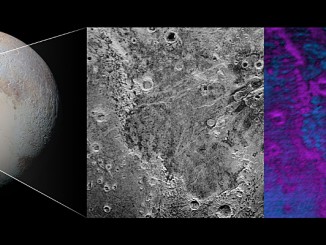
Month: March 2016



Disco lights from a galaxy cluster seen with multi-spectral eyes
MACS J0717, some 5.4 billion light-years away from Earth in the constellation of Auriga (The Charioteer), is the result of four galaxy clusters colliding. This image is a combination of observations in visible light, X-rays and radio waves from the NASA/ESA Hubble Space Telescope, NASA’s Chandra X-ray Observatory, and the NRAO Jansky Very Large Array.

Live coverage: Europe’s Mars mission launches
A powerful Proton booster launched at 0931:42 GMT Monday with the first part of a multibillion-dollar Mars mission led by the European Space Agency. The Mars orbiter and lander will search for signs of methane on the red planet, and demonstrate technologies to be used on a future European Mars rover.


See Mars escape the claw of the Scorpion on 16 March
Now just ten weeks from opposition, Mars is growing in both apparent size and brightness in the pre-dawn sky as the distance between our two worlds decreases. On the morning of Wednesday, 16 March, around the onset of UK nautical twilight, the Red Planet passes just 0.15 degrees from double star Graffias in the constellation Scorpius.


Explore Scientific 2″ Push-fit dielectric diagonal
Steve Ringwood casts his expert eye over and into a 2-inch push-fit dielectric mirror diagonal for refractors and catadioptrics from Explore Scientific. This star diagonal delivers optical fidelity since it has a mirror that has been honed to 1/12th wave and reflects 99 percent of incoming light to the eyepiece.

Telescopes combine to push frontier on galaxy clusters
Galaxy clusters are enormous collections of hundreds or even thousands of galaxies and vast reservoirs of hot gas embedded in massive clouds of dark matter. To learn more about clusters, including how they grow via collisions, astronomers have used some of the world’s most powerful X-ray, optical and radio telescopes. The name for this galaxy cluster project is the “Frontier Fields”.

What’s eating at Pluto?
Far in the dwarf planet’s western hemisphere, scientists on NASA’s New Horizons mission have discovered what looks like a giant “bite mark” on Pluto’s surface. They suspect that the methane ice-rich surface on Pluto may be sublimating away into the atmosphere, exposing a layer of water-ice underneath.
